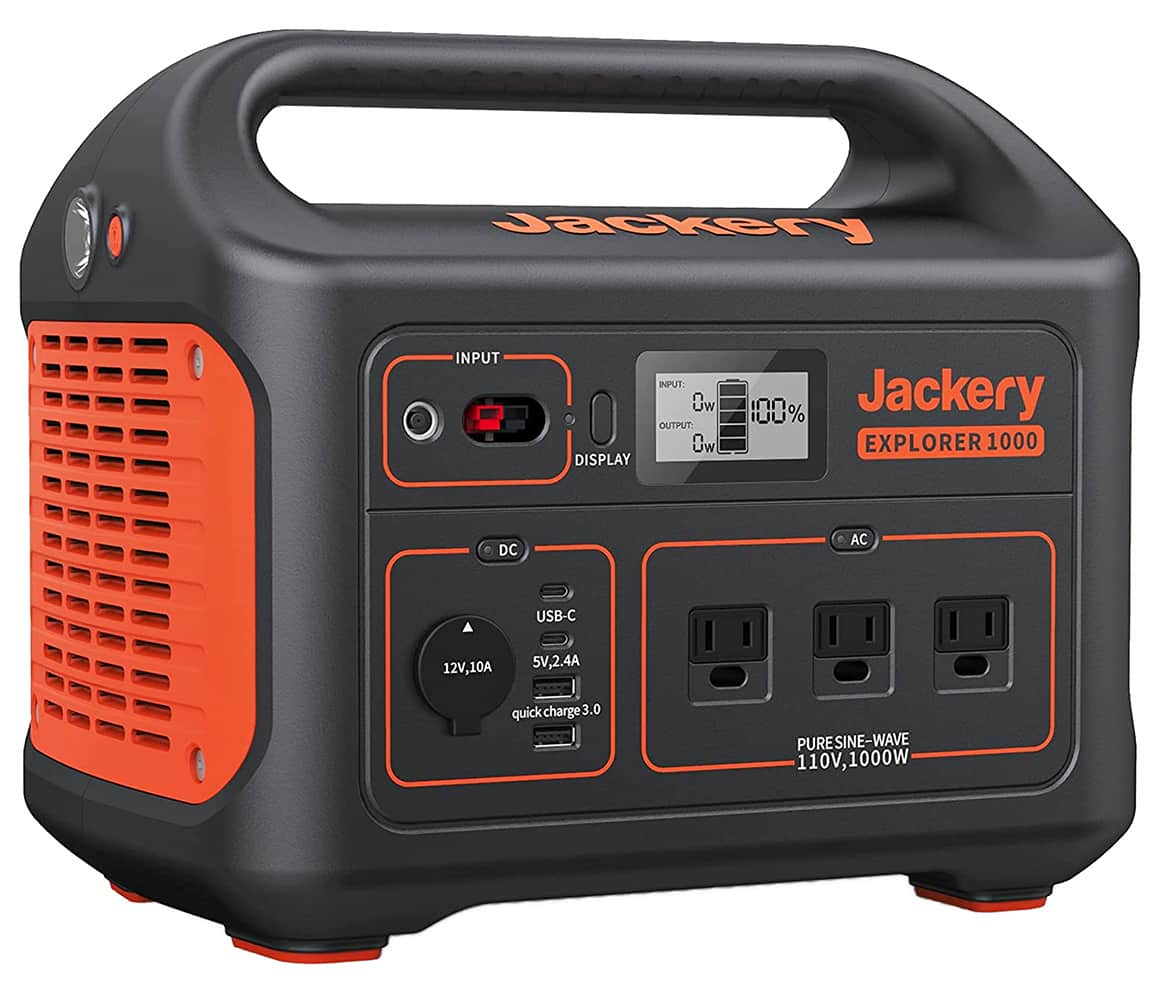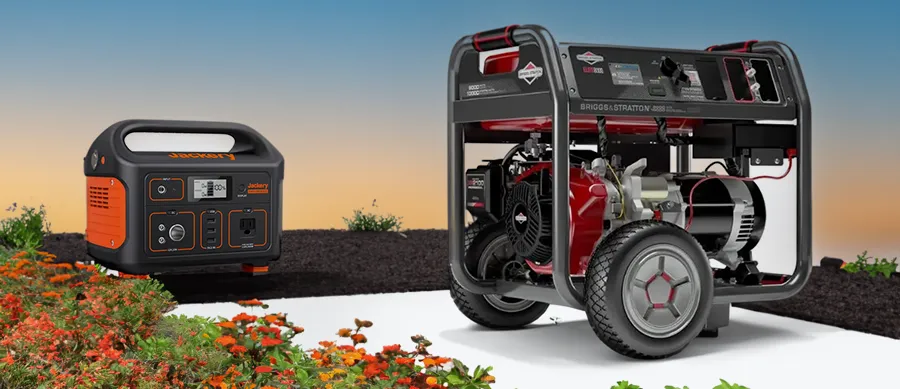all about portable power stations
what are portable power stations?
First, welcome to your source of information and advice about portable power stations.
Many of us may already have pocket-sized power banks such as this popular model from the renowned manufacturer Anker shown below. They are great for being light weight and able to charge smartphones and other small devices via their USB ports when we are out and about. But power banks generally have no other ports and their power outputs offer far less than that of a power station.

A portable power station, like the one shown below from Jackery, can be seen as a much larger power bank mainly in terms of its power capabilities, but also equipped with multiple ports and the ability to work with solar panels and solar extensions.

WHAT'S THE DIFFERENCE WITH PORTABLE GENERATORS?
Well, to begin with, it’s worth indicating that power stations are not strictly “generators”, as they are often referred to because they do not themselves generate power. Instead, they are sources of electrical energy stored in a lithium battery pack that has been charged by electricity generated by other means.
This stored energy is released over time when connected to devices and appliances either in the process of charging or powering them. Depending on the battery pack’s power rating the power station will, like any battery, eventually become discharged unless and until it is recharged. Some power stations can simultaneously power electrical items and be charged at the same time.

In respect of portable generators like the Briggs & Stratton shown here, and despite their name, these can be heavy and unwieldy, which limits their portability.
Portable power stations on the other hand are generally light: some of them are even small enough to be carried in a backpack making them ideal companions for trekkers and casual campers.
Another important aspect in which power stations differ a lot from portable generators is that they cannot compare in terms of power delivery. The latter are equipped with combustion engines which produce a lot more power output as long as there is available fuel (for example, gas or LPG).
But to their advantage, portable power stations can use solar panels to provide what manufacturers often claim as the potential for limitless power (weather-permitting, of course…).
Portable power stations do not themselves pollute like portable generators and are virtually silent (though in some models the fan may be heard when there is a need to cool the unit to keep it within its safe operating parameters).
While advances in the battery technology continue to offer improvements and impress casual onlookers, they are still some way off before their application in portable power stations can realistically be seen as a substitute for the power supplied by portable generators, about which we review some of the best in our sister site generatorjungle.
WHO ARE PORTABLE POWER STATIONS FOR?
A power station, just like a portable generator, is essentially for people who want or may need an alternative or supplementary source of electrical power. It’s a niche that’s growing all the time, especially for outdoor activities such as camping where the limited available power this kind of equipment offers is offset by the ultra-light weight and convenience offered.
But they also have an important place in the home, either to supplement a traditional generator or for those who live in an apartment where a portable generator is probably not an option unless the apartment has a large open-air terrace or spacious ground floor garden (you can find out why here). They can also be a lifesaver where people have to depend for medical reasons on 24/7 power for, say, CPAP equipment.
So it is in this vein that we present you with a selection of what appear to be some of the best power station models on the market. We have collected information on a wide range of manufacturers. We hope that this information consolidated in one place will be of some help when you are looking for one that most suits your personal circumstances.
TECHNOLOGIES USED IN POWER STATIONS
Power stations all produce “clean” power, much like inverter generators, though the reference to “clean” relates specifically to power stability and not to any polluting gases.
The current technology in use is basically the same in all power stations, though the type of lithium battery pack used can differ. Lithium-ion seems to be the most popular, possibly because this sort of battery has one of the highest energy densities of all battery technologies. They also have no “memory effect” where frequent charging can lead to lower maximum outputs. While their energy densities are superb in relation to other technologies, they are far behind the energy density of gasoline.
However, as so much emphasis is nowadays placed on the environment, lithium-ion battery technology is being used more and more to substitute gasoline to power electric vehicles. Tesla is possibly the most well-known brand, though there is a growing number of other brands, particularly from China which appear to be focused on dominating the production of lithium batteries and associated vehicles for the global market.
But it’s not all a rosy picture. Batteries containing lithium can in certain (rare) circumstances overheat, and high voltages can cause damage.
There have been a few, but high profile, incidents such as the Samsung Galaxy Note 7 smartphone, where a defective battery manufacturing process caused thermal runaway and overheating that resulted in combustion (in simple terms, the phone caught fire).
USEFUL TERMINOLOGY
Power stations share some of the terminology with portable generators. For instance, you will come across “surge/peak”, “starting” and “running/continuous watts”.
Surge/peak/starting watts relate to a device’s ability to handle a momentary increase in power required, for example, to start motor-driven appliances or those fitted with a compressor.
Running/continuous watts on the other hand are how much power the device can deliver continuously as the battery gradually discharges.
Regulated 12V is also often mentioned as a feature. A regulated outlet means the voltage is designed to remain stable in use at the declared voltage even as the battery discharges.
our work
The purpose of this website is to collect information on a number of power stations from leading manufacturers that include Aimtom, Anker, Bluetti, Ecoflow, Flashfish, Jackery, Lipower, Marbero, and Westinghouse, and present it in an easy to digest format with the aim of helping to reduce the time you spend in trawling the internet.